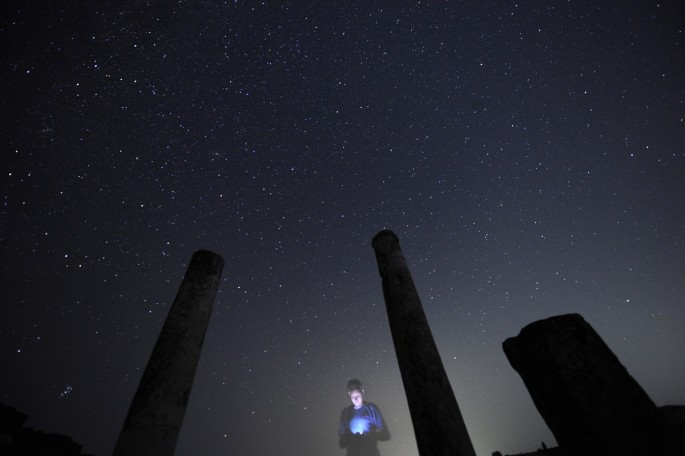Mark your calendars! The April 2016 sky will host a meteor shower Lyrids offering spectacular sights. In addition, mercury will be at greatest eastern elongation this month. Here is a guide to the major sky events occurring in the fourth month of this year.
New Moon: According to Seasky.org, the New Moon will rise on April 7, Thursday. The phenomena will reach its peak at 11:24 UTC. During this time of the month, the moon remains invisible and the sky remains dark. Thus, it is the best time to observe the other celestial objects in the sky.
Full Moon: As for the Full Moon, it emerges on April 22, Friday. During this time of the month, the moon is brightest as it is placed opposite Earth as the Sun. The phenomena peaks at 5:24 UTC. The April Full Moon is also known as Full Pink Moon, the Growing Moon and the Egg Moon.
Lyrids Meteor Shower: Astronomy enthusiasts and sky gazers can look forward to witnessing Lyrids Meteor shower on April 22 and April 23. According to Time and Date, Lyrids run from April 16 to April 25 and it will peak after the midnight and before the dawn.
The Lyrids is one of the oldest known meteor showers that originates from the debris of comet Thatcher. It has derived its name from the constellation named Lyra and its radiant point lies close to the star Vega.
As noted by the website, residents residing in Northern and Southern Hemisphere will be able to witness the meteor shower. They will be able to spot the shooting stars towards the East in the sky.
No special equipment is required to witness the phenomena. However, it is advised that the sky gazers must watch the spectacular sight from a dark location that is away from the city lights. Lyrids is an average meteor shower, producing 20 meteors when at its peak. So stargazers might have to wait longer before they can spot falling stars.
Mercury at greatest elongation east: On April 18, mercury will reach greatest eastern elongation and it is said to be the best time to observe the planet that is placed well in the evening sky. During greatest elongation, the distance between the planet and Sun reduces from Earth. Since mercury is at greatest eastern elongation, it will be visible after sunset.
Some other planets that are placed well in the April sky to be observed are Saturn, Jupiter, and Mars.



























